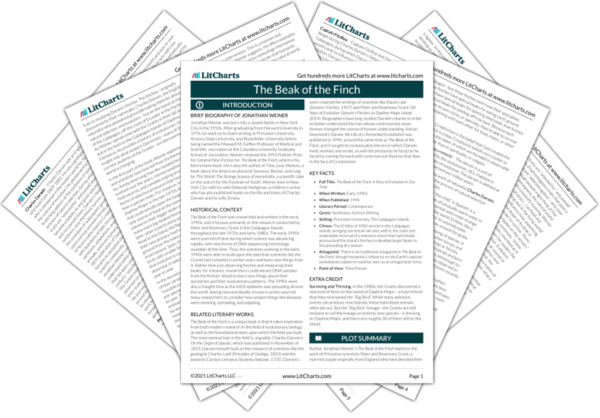As the ecosystem shifts around any given species, they might be pressurized to become hyper-specialized and fill a specific adaptive niche. But what this passage suggests is that environmental havoc might also create a situation in which greater variability and adaptability—traits that are conferred, as seen in the fruit flies, through hybridization—are most useful. This push and pull moves species toward and away from evolution over and over again. Again, while the smaller components of the evolutionary process can often happen very quickly, a species’ full evolution is a careful process that must be sustained for a long time.
